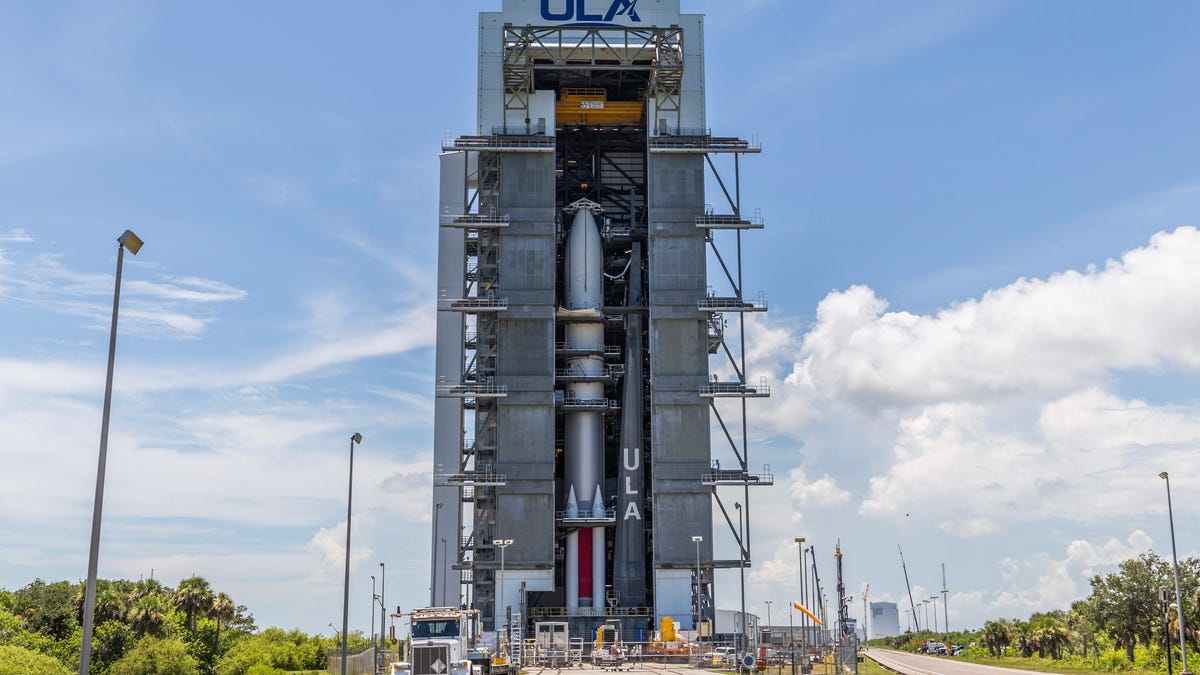(This story has been updated with new launch window information.)
United Launch Alliance officials are prepping a Vulcan rocket to send up a pair of Space Force national security satellites on one of the company’s longest-ever launches — lasting more than seven hours and extending more than 22,000 miles above Earth to complete deployment.
For comparison’s sake, the International Space Station orbits about 250 miles above the Earth’s surface.
“(Vulcan) is specifically designed for these exotic orbits that are primarily for the government. And this particular mission is a quintessential example,” ULA President and CEO Tory Bruno said Thursday, April 7, during a media roundtable.
“It is a direct injection to geosynchronous orbit. That means that it is a very, very long-duration mission,” Bruno said.
The silver-and-red Vulcan — equipped with four side-mounted solid rocket boosters — will lift off Tuesday, Aug. 12, during an hourlong launch window extending from 7:59 p.m. to 8:59 p.m. from Launch Complex 41 at Cape Canaveral Space Force Station.
ULA reported the weather forecast showed a 75% chance of favorable conditions, but primary meteorological concerns include cumulus clouds, surface electric fields and lightning.
Tuesday’s USSF-106 mission will represent the Vulcan rocket’s third flight:
The USSF-106 launch is the Vulcan’s first national security mission for the Space Force’s Space System Command. Looking ahead, the Space Force has assigned more than two dozen national security launches to Vulcan rockets at Cape Canaveral and Vandenberg Space Force Base in California.
Little information has been released about the USSF-106 payloads, which ULA reported will feature “demonstrations and experiments from Department of Defense customers.” One payload is the Air Force Research Laboratory’s Navigation Technology Satellite-3, DoD’s first experimental navigation satellite system in nearly 50 years.
Bruno said he forecasts ULA will reach nine total launches this year.
“Earlier we had expected more, but it’s a simple matter of getting started a little bit later in the year as we resolved the (solid-rocket booster) and had to synchronize with customer satellite deliveries and whatnot. So now it’ll be more like nine,” Bruno told reporters.
“We expect to hit our twice-a-month tempo before the end of the year. So that as we roll into 2026, that forecast is somewhere between 20 and 25 launches, based on weather being good and all things else being the same, and satellites being available,” he said.
At Launch Complex 41, Bruno said crews continue constructing a second vertical integration facility and a second Vulcan mobile launch platform.
He said he expects Vulcan rockets to start launching Amazon Project Kuiper satellite missions later this year, with ULA reaching a ratio of roughly ⅔ commercial flights and ⅓ Space Force flights.
“For this year, for ’25, we’re fully booked up. ’26? It’s pretty crowded. Someone would have to drop out of line in order for us to make a slot for someone else — that does happen, by the way. And then as we go into 2027, it’s really the same story,” Bruno said.
For the latest news from Cape Canaveral Space Force Station and NASA’s Kennedy Space Center, visit floridatoday.com/space. Another easy way: Click here to sign up for our weekly Space newsletter.
Rick Neale is a Space Reporter at FLORIDA TODAY. Contact Neale at Rneale@floridatoday.com. Twitter/X: @RickNeale1

